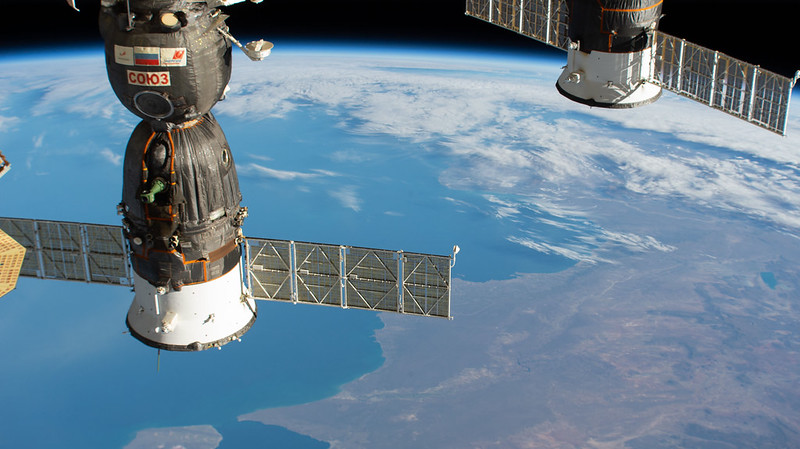Day Before Soyuz Relocation, Astronauts Continue Studies on Microgravity’s Influence

A day before Expedition 64 relocates the Soyuz MS-17 to another port on the International Space Station, the six-person crew continued studies on the effects of microgravity on humans, plants, and materials, along with a couple outreach events.
NASA astronaut Victor Glover took part in two media events, each accompanied by a different crewmate. First up, Glover and Kate Rubins spoke with Fox 11 “Good Day L.A.” about living and working aboard the space station. About two hours later, Glover joined Shannon Walker for an outreach event with U.S. Rep. Norma Torres of California, where they answered questions submitted by students.
Glover teamed up again with Rubins for an eye ultrasound. Receiving guidance from the ground, Glover served as operator for Rubins’ examination. Spaceflight, especially for prolonged missions, can affect vision and eye health. These ongoing checks provide invaluable data for researchers and test the accuracy and functionality of the portable medical equipment station crews rely upon — tools that will prove even more critical as explorers venture farther from Earth.
Meanwhile, NASA astronaut Michael Hopkins continued closing out spacesuit tools and equipment used during the previous Saturday spacewalk he and Glover completed to service the orbiting laboratory’s cooling system and communications gear. The veteran astronaut also swapped out a crystal growth chamber in support of the Industrial Crystallization Facility (ICF). The ICF is used for growing crystals in space that are not possible on Earth — specimens large enough for commercial use. These crystals are not only interesting to look at, but integral to the research and development of new materials.
JAXA’s (Japan Aerospace Exploration Agency’s) astronaut, Soichi Noguchi, was engrossed in an investigation that studies fast-growing plants, called Asian Herb in Space. Future space travel, especially to destinations like Mars, will rely on plants for sustenance, traditional medicine, and flavor. This experiment will add to the growing body of research on plant growth, plus provide new information on the formation of aroma compounds in herbs.
Flight Engineer Sergey Kud-Sverchkov of Roscosmos cultured various types of cells with the Kaskad investigation, while his counterpart, Commander Sergey Ryzhikov, was focused on setup and preparation for the Soyuz relocation activity.
On Friday, March 19, viewers can watch the Soyuz MS-17 undock and take a spin in the orbital neighborhood, so to speak, and later reattach to the Poisk module, which will free up the Rassvet port for the docking of Soyuz MS-18. Live coverage of the maneuver on NASA Television, the NASA app, and the agency’s website will begin at 12:15 p.m. EDT. Undocking from Rassvet is anticipated at 12:38 p.m., with redocking at Poisk targeted for 1:07 p.m.
The new vehicle, MS-18, will embark to the station after a planned April 9 launch, carrying NASA’s Mark Vande Hei and Roscosmos’ Oleg Novitsky and Pyotr Dubrov.
Learn more about station activities by following the space station blog, @space_station and @ISS_Research on Twitter as well as the ISS Facebook and ISS Instagram accounts.
from Space Station https://ift.tt/2OPizKC
Comments
Post a Comment